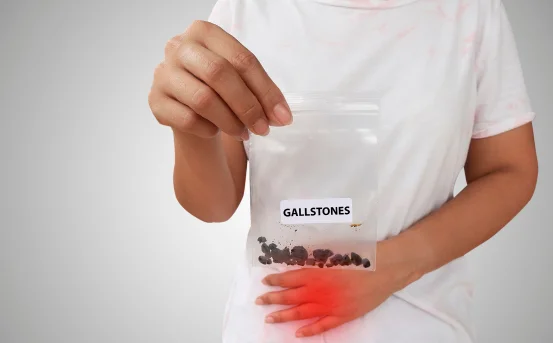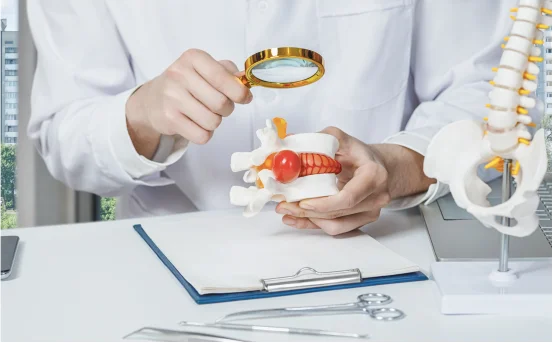Our mouth is a complex structure of tissues, nerves, glands, and bones that is constantly exposed to environmental irritants like food, chemicals, bacteria, and viruses. Because of this, it’s not uncommon for people to experience mouth sores, ulcers, lumps, or unusual changes in the oral cavity. While many of these changes are harmless and heal on their own, others may require closer investigation. When a suspicious lesion doesn’t go away, your dentist or oral surgeon may recommend an oral biopsy to determine what’s going on beneath the surface.
An oral biopsy is a minor surgical procedure in which a small sample of tissue is taken from the mouth and sent to a laboratory for microscopic analysis. The goal is to detect or rule out conditions such as chronic infections, autoimmune diseases, precancerous changes, or oral cancers. The type of biopsy performed depends on the size, location, and characteristics of the lesion or abnormal tissue.
Types of Oral Biopsy Surgery
- Incisional Biopsy :- An incisional biopsy is typically performed when the lesion is too large or irregular to remove completely, or when it is located in a difficult or sensitive area of the mouth. In this procedure, only a representative portion of the suspicious tissue is surgically removed, often along with a small amount of nearby normal tissue for comparison.
This type of biopsy is often used when oral cancer is suspected, as it allows the pathologist to evaluate a cross-section of the lesion while preserving most of the surrounding tissue. It’s performed under local anesthesia, and stitches may be placed at the biopsy site to promote healing. Patients may feel mild soreness for a few days, but recovery is generally smooth with proper aftercare.
- Excisional Biopsy :- An excisional biopsy involves the complete removal of the lesion or abnormal area along with a margin of surrounding healthy tissue. This method is both diagnostic and therapeutic, meaning it can confirm the diagnosis and potentially eliminate the issue in one step.
Excisional biopsies are ideal for small growths, ulcers, or lumps that are easily accessible and believed to be benign (non-cancerous). Because the entire abnormal tissue is removed, it can provide a more accurate diagnosis and eliminate the need for further procedures if the lesion turns out to be harmless. Recovery typically involves a few days of discomfort and soft food intake until the tissue heals completely.
- Punch Biopsy :- A punch biopsy uses a circular cutting tool to remove a small, round piece of tissue that includes all the layers of the oral mucosa. This method is ideal for flat lesions, white or red patches, or mucosal ulcers, particularly on the tongue, inside of the cheeks, or lips.
The procedure is quick, minimally invasive, and performed under local anesthesia. The wound may or may not require stitches depending on the size. Punch biopsies are particularly helpful in diagnosing autoimmune or inflammatory diseases of the oral mucosa such as lichen planus or pemphigus vulgaris. Patients generally recover within a few days with minimal side effects.
- Brush Biopsy (Exfoliative Cytology) :- Unlike surgical biopsies, a brush biopsy is a non-invasive diagnostic screening method used to collect surface cells from the lesion. A specialized brush is used to gently scrape or rotate over the suspicious area, gathering a sample of cells that can then be examined under a microscope.
Brush biopsies are painless and bloodless, making them a convenient first-line approach to examine lesions that are not clearly dangerous or are in areas that are hard to access. However, they are less definitive than surgical biopsies and cannot assess deeper tissue changes. If abnormal or atypical cells are found, a more invasive biopsy (like incisional or punch) may be required for confirmation.
- Fine Needle Aspiration (FNA) Biopsy :- A fine needle aspiration (FNA) biopsy is used primarily for lumps or masses in deeper tissues, such as the jawbone, salivary glands, lymph nodes, or neck region. A very thin needle is inserted into the lump to extract cells or fluid for analysis. This method is particularly useful for evaluating cysts, swollen glands, or suspected metastatic cancer from nearby tissues.
FNA is minimally invasive, causes little discomfort, and can often be performed in a clinic without the need for stitches or prolonged recovery. While the sample size is small, it can provide important information about the nature of the swelling and help determine whether further surgical evaluation is necessary.
- Laser Biopsy :- In a laser biopsy, a focused beam of light is used to remove the targeted tissue without a scalpel. This method is particularly useful for soft tissue biopsies in delicate or highly vascular areas such as the gums, cheeks, or tongue. The laser simultaneously cuts and cauterizes the tissue, reducing bleeding and swelling during the procedure.
Laser biopsies are less invasive and generally result in faster healing with minimal discomfort. However, care must be taken to avoid heat damage to the tissue, which can affect the accuracy of the biopsy results. Not all clinics offer laser biopsy, as it requires specialized equipment and training.
- Bone Biopsy :- When a suspicious lesion or abnormality is located in the jawbone (such as a cyst, tumor, or unexplained bone loss), a bone biopsy may be necessary. This involves removing a small piece of bone using a drill or surgical instrument under local or general anesthesia. It is less common than soft tissue biopsies but is critical for diagnosing bone tumors, osteomyelitis (bone infection), or metabolic bone diseases.
Recovery from a bone biopsy may take slightly longer and requires good oral hygiene to prevent infection. Pain is typically mild to moderate and can be managed with medication and soft foods.
Conclusion
Oral biopsy surgery is a valuable tool in the early detection and diagnosis of potentially serious oral health conditions. Whether you’re dealing with a persistent sore, unusual growth, or suspicious patch inside the mouth, a timely biopsy can provide critical answers and help prevent complications.
The type of biopsy your dentist or oral surgeon recommends will depend on factors like the lesion’s appearance, size, location, and your medical history. From simple brush biopsies to more involved surgical procedures, each method plays a key role in ensuring accurate diagnosis and guiding appropriate treatment.























